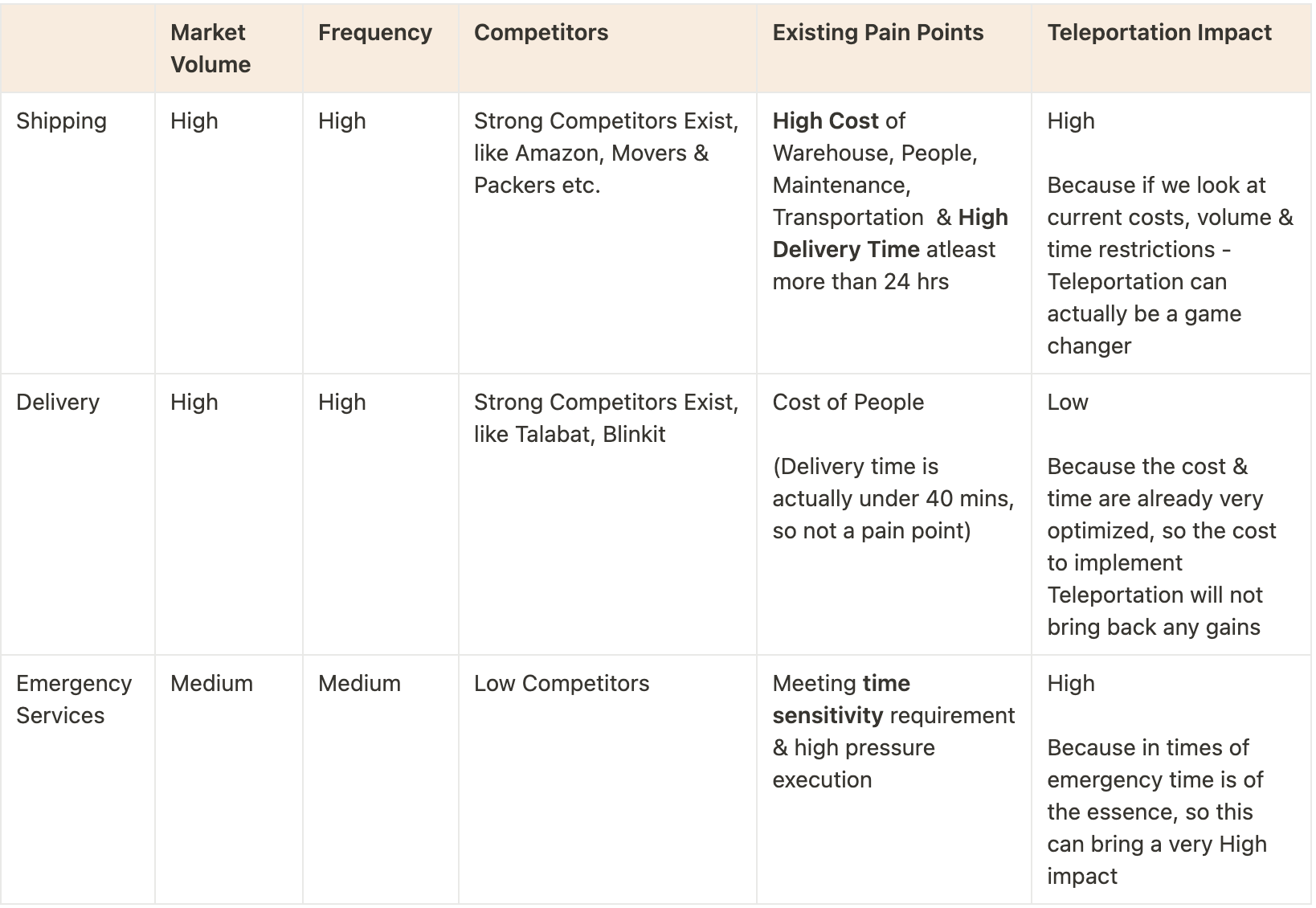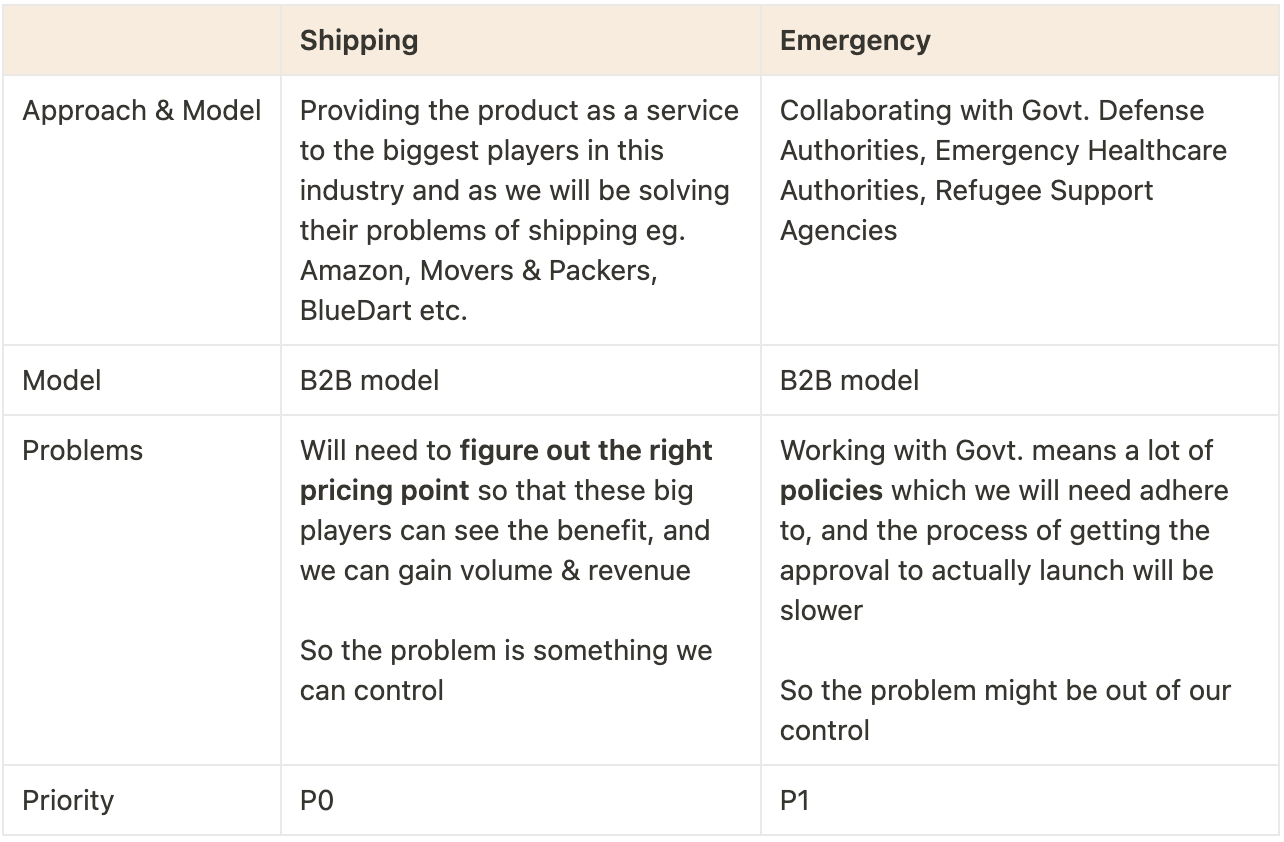💡 If the Future of Travel Is Teleportation - Who Will Use This Technology?
Figuring out the product market fit is a problem which every PM faces, recently my manager & I spoke of this riveting & thought-provoking case study, and here is a summary of how I would approach it.
Imagine there is a product which can help you Teleport! Sounds really cool right? The first thing which might come to everyone’s mind is “Dr. Strange” teleporting from one place to another in a matter of seconds.

Now you are the Product Manager for this product who needs to figure out a Product Market Fit for this cool innovation which can get us a good user growth.
So how do I approach it?
Step 1: By asking some questions to stay on the same page as everyone else in the discussion, and ensure we have all the necessary information with respect to our product & goal.
- By Teleportation do we all mean a technology which will help us to travel from “Point A” to “Point B” in a matter of seconds? This was our alignment
- How does our “Teleportation product” work - is it actually like “Dr. Strange” - opening a portal to a certain place and then just stepping through the same “OR” is it like the movie “Pixels” where every atom of your body is disintegrated and then reintegrated as is OR it’s something else? For sake of our discussion and to keep things interesting we kept it similar to the movie Pixels
- Have we seen any kind of failure for the product? The product has seen failures like,
- during reintegration it can reintegrate incorrectly
- during teleportation the exact destination can be mistaken
- What is the success to fail ratio for the product in all the trial runs we have done? For sake of our discussion we kept 95% as the success rate, ie. out of 100 times, 5 times it may fail
- Is this technology new, or there are any competitors out there doing something with this technology? It is the first of it’s kind
- Is it safe to assume it’s expensive than other commute related mediums already available like, flights, ships, cars etc.? We were aligned on this assumption
- How much volume and frequency can we take in? Are there any restrictions in terms of weight? Again for the sake of our discussion, we assumed the weight to be 200 kgs and frequency to be 20 slots per day as it’s a new technology initially we want more time for maintenance. For rest we assumed no other restrictions.
Step 2: Next I think of the possible user segments & use cases
Points I kept in mind before deep diving:
- It’s a new technology which might mean it hasn’t gain a lot/any of trust in the market as people have not seen any use cases of it yet
- It is expensive so might not be used by the masses
- Our goal is to get product market fit while keeping user growth as one of the metrics in mind
So, ideally for any “commute” focused product the possible area of usage:
🙎🏼♂️ Transportation of People
- Travel
- Tourism
- Business Travel
- Personal Travel
- Daily Commute
📦 Transportation of Goods
- Shipping : Traveling of good from Location A to Location B, like. when people are moving their houses, when orders are placed on amazon
- Delivery : Moving goods from Location A into hands of the recipient, like when people are ordering food or groceries
But if I look at product fit for “Teleportation”, I would ignore the ❌ Transportation of People the main reasons being:
😵 It seems very risky & unethical specially considering even tiniest possibility of failures can lead to a person have some kind of deformity or worse - cost them their life
🤔 After going through disintegration & reintegration does the person who comes out even remain the same - not only physically but also morally & emotionally - is it even safe?
😨 What is stopping someone from copying the atoms and creating another version of you - seems scary!
With these concerns gaining the trust of users sounds like an extremely long game.
So to start off with, this doesn’t seem like the right step, so I deep dive into “Transportation of Goods”, with this tech, we can add one more area in use case ie. “Emergency Services”
Now the final list of possibilities becomes:
🚢 Shipping Industry
🚚 Delivery Industry
🆘 Emergency Services
Step 3: How do I decide which one will have most impact?
Here I make my Opportunity Sizing Table,

So as per this, my two best bets would be “Shipping” and “Emergency Services”
Step 4: So how do we prioritize between the two?
Because our goal is Product-Market Fit with User Growth, “Shipping” industry is a good first step, another reason for Shipping to be the first choice is because distribution is comparatively easier here.

Step 5: The final step
It would be just deep diving in the Shipping industry & validating (or invalidating) the assumptions I made here.
- Doing user research to figure out if the pain points are indeed as per my understanding and if the product’s monetisation strategy will hold up in the market - is going to be very important.
- Experimenting with a small scale & quick collaboration for first launch as an to see:
- how it’s going in terms of growth for us &
- how it’s going it terms of value for our users
- what are the issues which were not known to us before
Because this will help me shape the product better and design a launch plan which will work at scale & avoid any negative PR. This final step will help me “Fail Fast & Learn Faster” before going all-in in one direction & making mistakes which could’ve been avoided.
Additional & Important Step: Ensure the Responsible Usage of the Product,
because:
